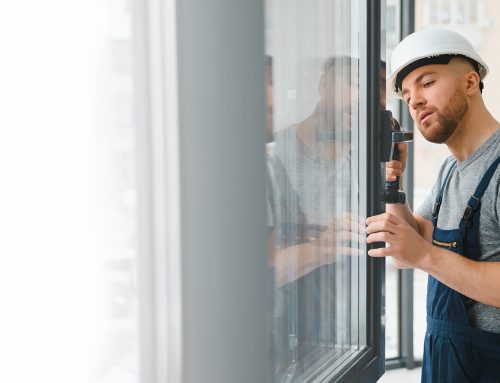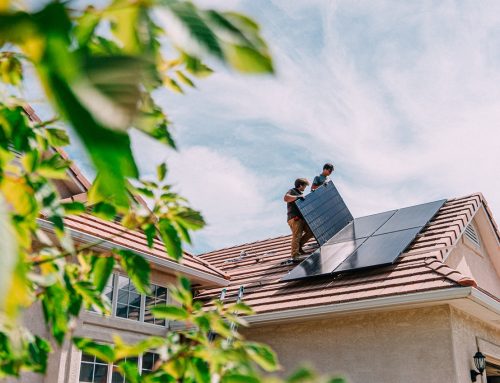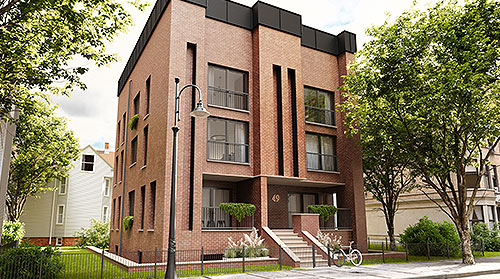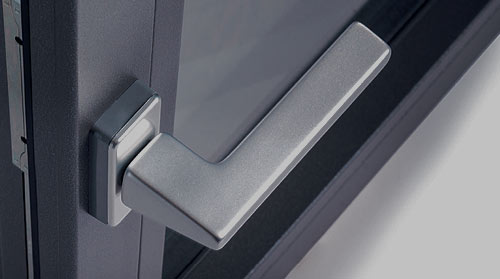Double-hung windows have long been the standard in North American homes, but there’s a smarter alternative—tilt and turn windows. Unlike traditional designs, they provide versatile ventilation, superior insulation, and effortless maintenance, making them a strong contender for today’s homes. This article breaks down the key differences between these two window styles, helping you decide which is the better fit for your next project.
What Are Double-Hung Windows?
Double-hung windows are one of the most common window types in North American homes. They feature two sashes that slide vertically, allowing the window to open from the top, bottom, or both for ventilation. Their simple, familiar design makes them a go-to choice for many homeowners.
Why they are popular?
- Their traditional style complements a wide range of architectural designs, from classic to contemporary.
- They are widely available, making them an accessible and cost-effective option.
- Many homeowners are already familiar with their operation, which makes them an easy, low-maintenance choice.
Limitations of double-hung windows
- Limited Ventilation: Since the sashes only slide up and down, airflow control is restricted compared to more versatile window designs.
- Energy Efficiency Concerns: The sliding mechanism often results in weaker seals, making double-hung windows more prone to air leaks and heat loss.
- Cleaning Challenges: Some modern double-hung windows have tilt-in sashes for easier cleaning, but exterior panes—especially on upper floors—can still be difficult to maintain.
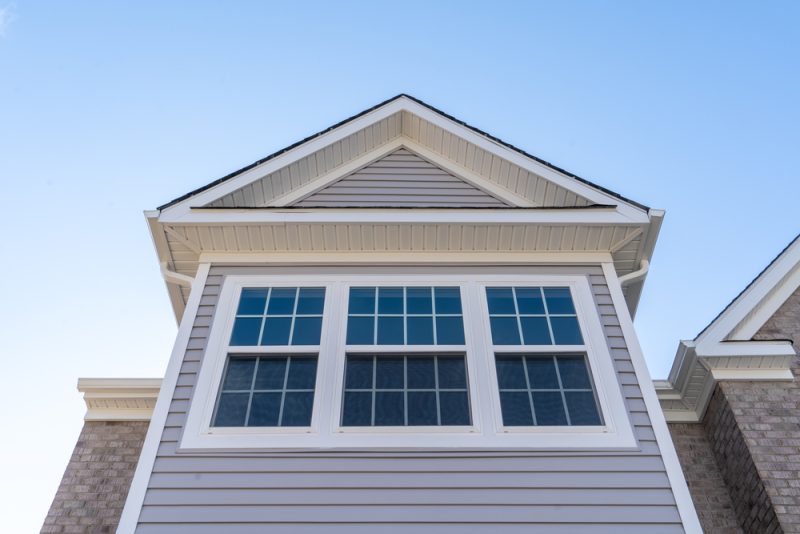
Double-hung Windows
Tilt and Turn Windows – A Modern Alternative to Double-Hung Windows
Tilt and turn windows offer a versatile and energy-efficient alternative to traditional double-hung windows. Their dual-function design provides more flexibility, better ventilation control, and easier maintenance.
Design & Operation
Tilt and turn windows feature two distinct opening modes:
- Tilt Mode: The top of the window tilts inward, allowing controlled ventilation while keeping the window secure.
- Turn Mode: The window swings fully inward, offering maximum airflow and making it easy to clean both interior and exterior panes—no ladders or extra effort required.
Why They Are Gaining Popularity?
Tilt and turn windows are becoming a go-to choice for modern homes, thanks to their sleek aesthetic and the flexibility to match different architectural styles. They are available in both uPVC and aluminum, giving homeowners the option to choose the best material to complement their home’s design.
For construction teams, installation is quick and efficient with solutions like:
- Nailing flange for uPVC, simplifying the installation process and ensuring a secure fit.
- Brickmould technology for aluminum, allows for customizable trims and finishes, giving builders more flexibility when applying exterior details.
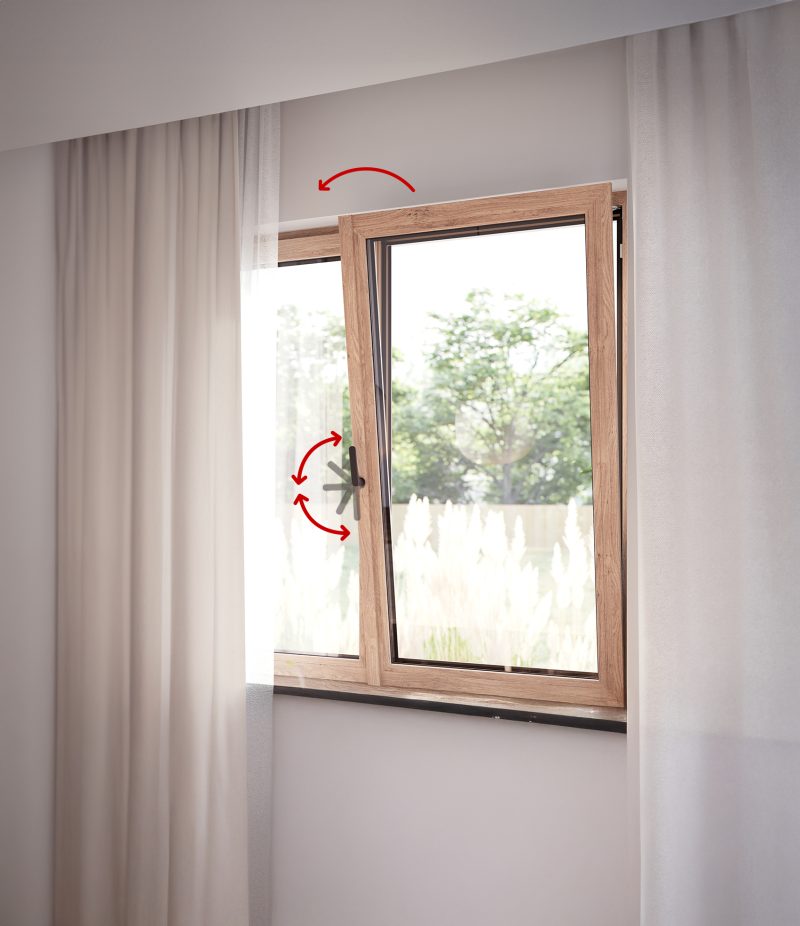
Comparing Tilt and Turn and Double-Hung Windows
| Feature | Tilt and Turn Windows | Double-Hung Windows |
| Ventilation | Dual function allows for precise airflow control with tilt mode for secure ventilation. | Limited airflow control; can open from top or bottom but lacks versatility. |
| Ease of Cleaning | Inward opening allows for easy cleaning from inside, even on upper floors. | Some models have tilt-in sashes, but cleaning exterior panes is harder. |
| Energy Efficiency | Superior insulation due to airtight seals and multi-point locking systems. | More prone to air leaks due to sliding sashes and weaker seals. |
| Security | Multi-point locks and tilt mode prevent forced entry; | Basic locking mechanisms; easier to force open. |
| Aesthetic Appeal | Sleek, modern design; works well in both traditional and contemporary homes. | Classic look; more common in traditional home designs. |
| Customization | Wide range of sizes, colors, and glazing options (OKNOPLAST offers various finishes). | Limited customization compared to tilt and turn windows. |
| Durability | Long-lasting materials like uPVC and aluminum provide excellent weather resistance; available with HVHZ certification. | Sliding components experience more wear and tear over time. |
Why Tilt and Turn Windows Are the Better Choice for Modern Homes?
Tilt and turn windows go beyond traditional designs, offering superior energy efficiency, safety, and customization—features that make them a perfect fit for modern homes.
Energy Efficiency & Sustainability
- Multi-chamber profiles and high-quality seals provide excellent thermal insulation, reducing heat transfer and improving indoor comfort.
- Available with double– or triple-glazing, significantly lowering energy consumption by keeping warm air inside during winter and blocking heat in the summer. At OKNOPLAST we can even prepare a quadruple glazing package.

Flexibility & Safety
- Ideal for homes with children, as the tilt mode allows ventilation without fully opening the window, reducing fall risks.
- Built with multi-point locking systems, offering enhanced security compared to traditional windows. For added protection, homeowners can opt for windows with a lock and key mechanism.
- For elderly residents or individuals with mobility concerns, tilt and turn windows can be designed to sit level with the floor, creating a seamless, step-free opening for easy access.
Customization & Modern Design
- Available in a wide range of colors, finishes, and materials, making them adaptable to any home style, from contemporary to traditional.
- Homeowners can choose from various glazing options, including ornamented, frosted (milky), or high-impact resistant glazing, catering to both aesthetic and functional needs.
Where To Get Tilt and Turn Windows?
For homeowners looking for a better alternative to traditionally used windows, OKNOPLAST tilt and turn windows offer a modern, energy-efficient, and secure solution. Curious to see them in action? Visit one of our many trusted dealers to experience how OKNOPLAST tilt and turn windows operate in real-life scenarios and discover how they can transform your home.
Continue Reading
Products.

